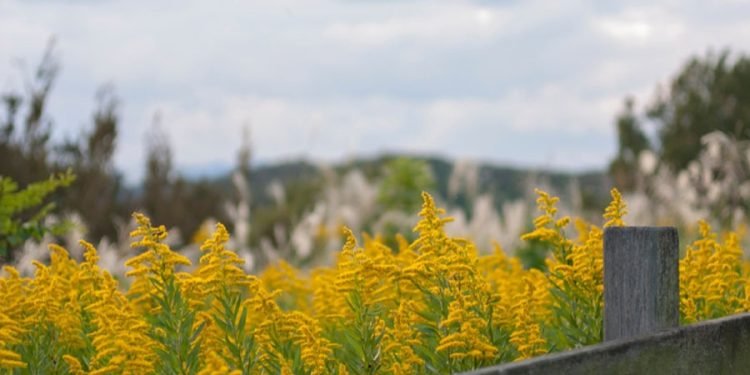Living in the USA, it is common to experience seasonal allergies, especially during the spring and summer months. With warmer temperatures and blooming plants, allergens such as pollen can cause various allergic reactions, including hay fever.
Hay fever is caused when your body’s immune system reacts to inhaled pollen, causing inflammation of the mucous membranes in your nose, eyes, and throat. Symptoms often include a runny or congested nose, sneezing, watery eyes, and itchy throat. Managing hay fever symptoms during a high pollen count can be difficult, but there are steps you can take to help reduce the impact of the allergens on your body. Taking antihistamines, using saline nasal sprays, avoiding outdoor activities when the pollen count is high, and using a pollen filter in your home can all help to reduce the severity of your hay fever symptoms. Additionally, it is essential to remain hydrated and get plenty of rest to help your body fight off allergens.
What is Hay Fever?
Hay fever, also known as allergic rhinitis, is an allergic reaction to airborne particles like pollen, dust, animal dander, and mold spores. Common symptoms of hay fever include sneezing, runny nose, itchy eyes and throat, redness, and swelling in the eyes, congestion, and fatigue. These reactions are caused when the body’s immune system mistakes the allergens in the air for dangerous substances and releases histamines as a response. This causes the release of other chemicals that lead to an inflammatory response, causing the symptoms associated with hay fever.
Checking the Pollen Count
The first step in managing hay fever symptoms during a high pollen count is to check the pollen count. The pollen count is a measurement of the number of pollen grains in the air in a particular area. Pollen counts can vary significantly depending on the time of day and the weather conditions.
Some websites allow you to check the pollen count in your area. The getambee.com website, for example, provides a detailed pollen map of the United States. This map displays the pollen count for each area of the country. The website also includes information about the types of pollen in the air, which can help determine which allergens you may be reacting to.
Using Medications
Some medications can help manage your hay fever symptoms if you cannot avoid the allergens. Antihistamines can be taken to reduce the body’s response to allergens. These medications block the histamine your body produces when it reacts to allergens, resulting in fewer allergy symptoms. Decongestants can also be used to reduce nasal congestion and allergies.
Decongestants shrink the blood vessels in your nose, which can help reduce inflammation and relieve congestion. If you suffer from severe symptoms, your doctor may prescribe a nasal spray or other medication to help reduce the severity of your symptoms. Nasal sprays can help reduce inflammation in the nasal passages, while certain oral medicines can help relieve sneezing, itching, and other hay fever symptoms.
Using Natural Remedies
In addition to medications, there are also natural remedies that can help manage hay fever symptoms. Eating a diet rich in fruits and vegetables can reduce inflammation and improve overall immunity. Herbal remedies such as nettle berries, chamomile, and ginger can help reduce inflammation and congestion. Taking a daily probiotic supplement can also help boost your body’s ability to fight off allergies and reduce hay fever symptoms.
Managing hay fever symptoms during a high pollen count can be challenging, but there are steps you can take to reduce the impact of the allergens on your body. Checking the pollen count in your area and avoiding allergens are essential steps in managing hay fever symptoms. If avoiding the allergens is not possible, medications and natural remedies can be used to reduce the severity of the symptoms.
Tracking Real-time Pollen Count and Avoiding the Allergens
Once you know the pollen count in your area, it is essential to try to avoid allergens as much as possible. This can be done by keeping windows and doors closed, using air conditioning and air filters when appropriate, and avoiding outdoor activities during high pollen counts. Limiting exposure to other allergens, such as pet dander, dust mites, and mold, is also helpful. This can include vacuuming and dusting regularly, washing bedding in hot water, and keeping indoor humidity levels low.
Additionally, it is advisable to avoid leaving the house when pollen counts are the highest, typically between 5 am and 10 am. If you must go outside, wearing a mask or scarf can help to reduce exposure. Finally, showering and changing clothes after being outdoors can also help to minimize the amount of pollen you bring indoors.
Certain companies like Ambee provide real-time and forecast pollen count data that can be extremely beneficial for this. They also have an app that tracks pollen count on the go. Using these technologies, you can monitor the pollen levels, understand when to step-out, or avoid allergies altogether.












